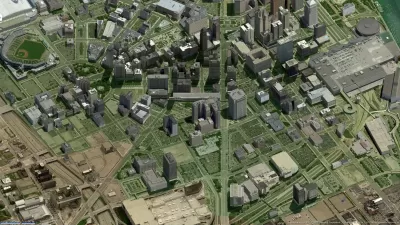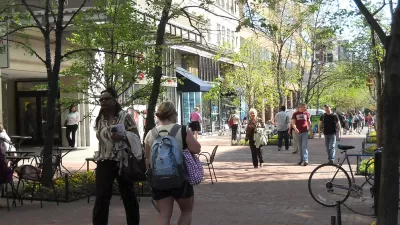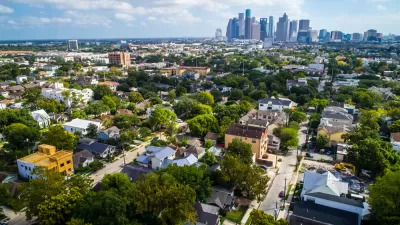If Detroit needs to be "rebuilt" or "reimagined," why not do so around a walkable, convenient ideal? A compact Motor City where essential goods and services are available within a 20-minute walk?

"Detroit Mayor Mike Duggan recently introduced the idea of rebuilding Detroit around the concept of the 20-minute neighborhood, where folks can walk or bike to everything they need outside of work." A valiant concept to be sure, but is it realistic?
Wayne State planning professor Robin Boyle writes, "a 20-minute neighborhood is an active, safe, walkable, convenient, predominantly residential neighborhood. A place where people can get most of their day-to-day goods and services — shopping with good food, access to transit, parks and schools — within a 20-minute walk."
Density is the deciding factor, but Detroit has become renowned for shedding its density. "The mayor's initial target neighborhoods: L6 (Livernois and McNichols), Southwest Detroit and West Village on the east side might work. But the key to extending the concept is density. Are there enough households, with sufficient disposable income, to sustain the shops, the local services? Are there enough children to keep the school open and thriving?"
Success will depend on fostering areas best suited to denser amenities, which means leaving other areas out. "The 20-minute neighborhood needs a residential density of somewhere between 15 and 20 households per acre to support local retail. Outside of the downtown/Midtown corridor and a select number of more dense, occupied neighborhoods, most of Detroit has a lower residential density."
FULL STORY: Could the 20-minute neighborhood work in Detroit?

Study: Maui’s Plan to Convert Vacation Rentals to Long-Term Housing Could Cause Nearly $1 Billion Economic Loss
The plan would reduce visitor accommodation by 25,% resulting in 1,900 jobs lost.

North Texas Transit Leaders Tout Benefits of TOD for Growing Region
At a summit focused on transit-oriented development, policymakers discussed how North Texas’ expanded light rail system can serve as a tool for economic growth.

Why Should We Subsidize Public Transportation?
Many public transit agencies face financial stress due to rising costs, declining fare revenue, and declining subsidies. Transit advocates must provide a strong business case for increasing public transit funding.

How to Make US Trains Faster
Changes to boarding platforms and a switch to electric trains could improve U.S. passenger rail service without the added cost of high-speed rail.

Columbia’s Revitalized ‘Loop’ Is a Hub for Local Entrepreneurs
A focus on small businesses is helping a commercial corridor in Columbia, Missouri thrive.

Invasive Insect Threatens Minnesota’s Ash Forests
The Emerald Ash Borer is a rapidly spreading invasive pest threatening Minnesota’s ash trees, and homeowners are encouraged to plant diverse replacement species, avoid moving ash firewood, and monitor for signs of infestation.
Urban Design for Planners 1: Software Tools
This six-course series explores essential urban design concepts using open source software and equips planners with the tools they need to participate fully in the urban design process.
Planning for Universal Design
Learn the tools for implementing Universal Design in planning regulations.
Ascent Environmental
Borough of Carlisle
Institute for Housing and Urban Development Studies (IHS)
City of Grandview
Harvard GSD Executive Education
Toledo-Lucas County Plan Commissions
Salt Lake City
NYU Wagner Graduate School of Public Service





























